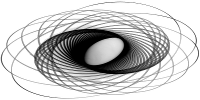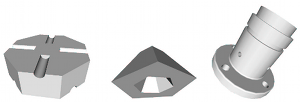F. C. Langbein, B. I. Mills, A. D. Marshall, R. R. Martin. Finding Approximate Shape Regularities for Reverse Engineering. J. Computing and Information Science in Engineering, 1(4): 282-290, 2001. [DOI:10.1115/1.1430232] [PDF]
Current reverse engineering systems can generate boundary representation (B-rep) models from 3D range data. Such models suffer from inaccuracies caused by noise in the input data and algorithms. The quality of reverse engineered geometric models can be improved by finding candidate shape regularities in such a model, and constraining the model to meet a suitable subset of them, in a post-processing step called beautification. This paper discusses algorithms to detect such approximate regularities in terms of similarities between feature objects describing properties of faces, edges and vertices, and small groups of these elements in a B-rep model with only planar, spherical, cylindrical, conical and toroidal faces. For each group of similar feature objects they also seek special feature objects which may represent the group, e.g. an integer value which approximates the radius of similar cylinders. Experiments show that the regularities found by the algorithms include the desired regularities as well as spurious regularities, which can be limited by an appropriate choice of tolerances.
![]() This work is licensed under a Creative Commons Attribution-NonCommercial-ShareAlike 4.0 International License.
This work is licensed under a Creative Commons Attribution-NonCommercial-ShareAlike 4.0 International License.

